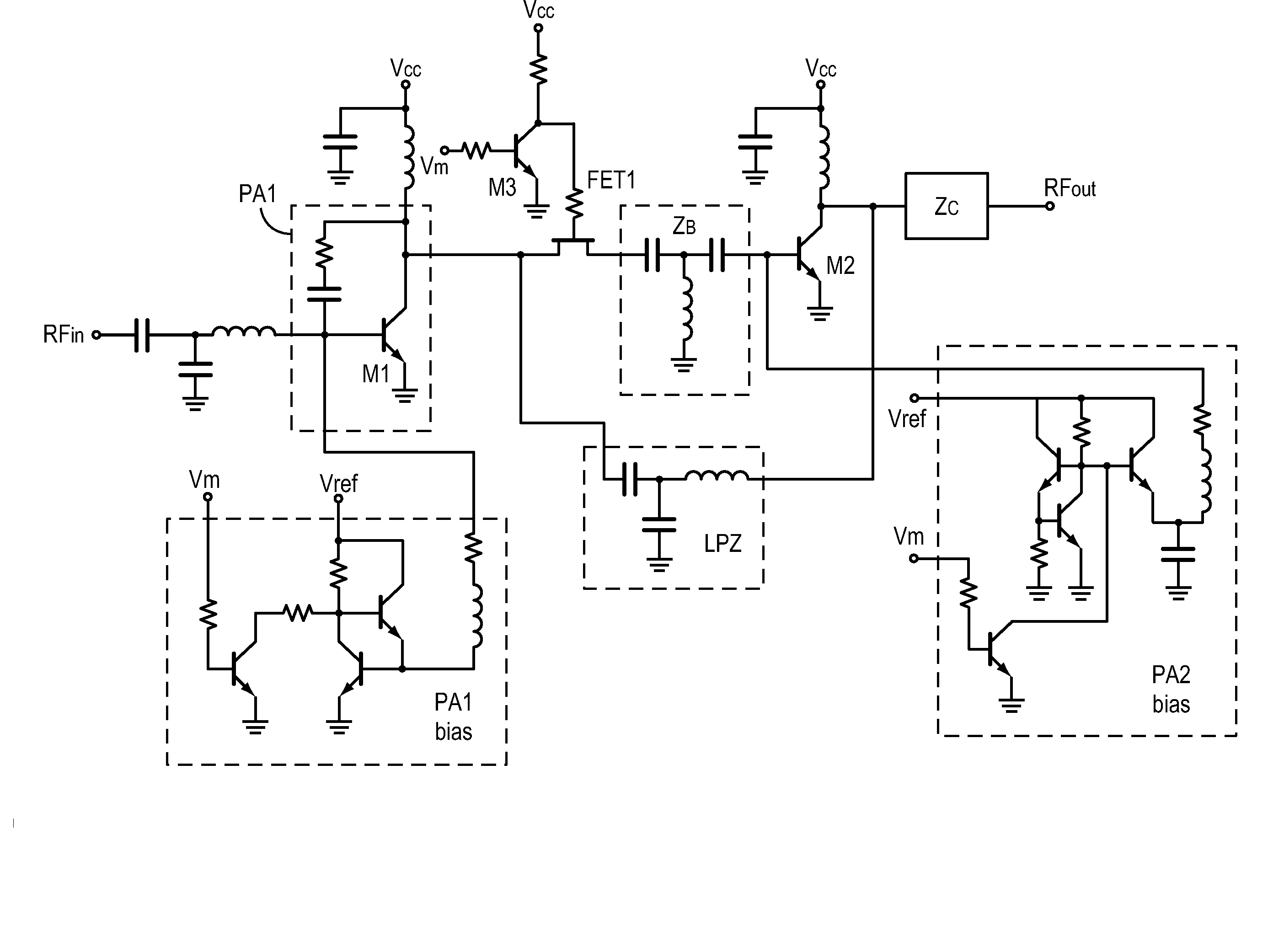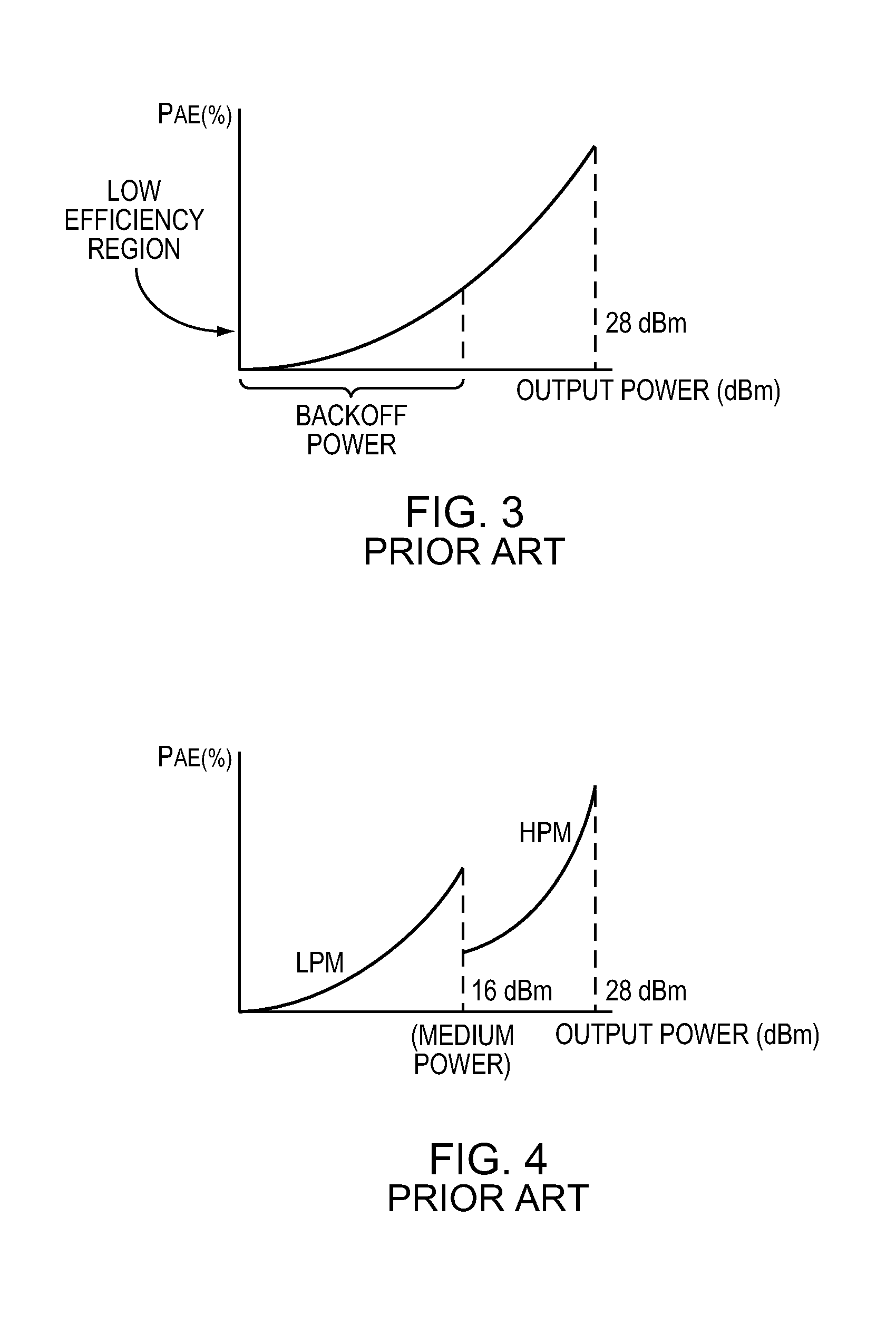Multi-mode power amplifier with high efficiency under backoff operation
a power amplifier and backoff operation technology, applied in the direction of amplifier combinations, gated amplifiers, gain control, etc., can solve the problems of high cost, large loss of switches, and non-optimal current consumption, so as to prevent any power leakage, reduce power consumption, and reduce power consumption
- Summary
- Abstract
- Description
- Claims
- Application Information
AI Technical Summary
Benefits of technology
Problems solved by technology
Method used
Image
Examples
Embodiment Construction
[0040]FIG. 5 illustrates a block diagram circuit incorporating an embodiment of the pre-sent invention. Comparing FIG. 5 with FIG. 1, two impedance matching circuits, the 1st and the 3rd in FIG. 1 are eliminated in FIG. 5. In FIG. 5 there are two power paths, the first being from the input matching network 32 to a first multi-stage power amplifier 33, an RF switch 34, an inter-stage impedance matching network ZB 36, and a multi-stage auxiliary PA (power amplifier) 37 to an output impedance matching network Zc 38. The second path is from the input matching network 32 to the multi-stage power amplifier 33, a LPZ matching network 39 to the output impedance matching network Zc 38.
[0041]“First path” describes the path through the RF switch 34 in the HP mode, while the “second path” describes the path through the LPZ matching network 39. This second path is always operational. These designations are used to prevent confusion with HP and LP modes.
[0042] The bias control 30 in response to...
PUM
 Login to View More
Login to View More Abstract
Description
Claims
Application Information
 Login to View More
Login to View More - R&D
- Intellectual Property
- Life Sciences
- Materials
- Tech Scout
- Unparalleled Data Quality
- Higher Quality Content
- 60% Fewer Hallucinations
Browse by: Latest US Patents, China's latest patents, Technical Efficacy Thesaurus, Application Domain, Technology Topic, Popular Technical Reports.
© 2025 PatSnap. All rights reserved.Legal|Privacy policy|Modern Slavery Act Transparency Statement|Sitemap|About US| Contact US: help@patsnap.com



